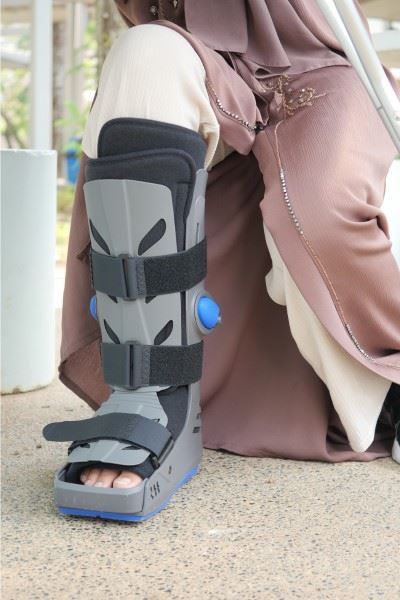-
Home
-
A Guide to Cam Walker Boots
A Guide to Cam Walker Boots
May 16, 2024
 CAM walker boots, also known as Controlled Ankle Motion boots, are orthopedic devices designed to support and immobilize the foot and ankle. These boots are often prescribed by healthcare professionals to facilitate the healing process after injuries or surgeries. This article will delve into what CAM walker boots are, their uses, benefits, and the different types available.
CAM walker boots, also known as Controlled Ankle Motion boots, are orthopedic devices designed to support and immobilize the foot and ankle. These boots are often prescribed by healthcare professionals to facilitate the healing process after injuries or surgeries. This article will delve into what CAM walker boots are, their uses, benefits, and the different types available.
What are CAM Walker Boots?
CAM walker boots are specialized orthopedic boots that provide support, stability, and protection to the lower leg, ankle, and foot. They are constructed with a rigid outer shell and a cushioned inner lining, often with adjustable straps or air bladders to ensure a snug and secure fit. The primary purpose of these boots is to immobilize the affected area, reducing movement and allowing the body to heal.
Benefits of CAM Walker Boots
One of the main benefits of these walking boots is that they help promote proper healing by immobilizing the injured area and reducing pressure on the affected bones and soft tissues. This can help speed up the recovery process and minimize pain and swelling.
Unlike traditional casts, CAM walker boots can be removed for bathing, wound care, and rehabilitation exercises, making them a more convenient option for many patients. Additionally, CAM walker boots can be adjusted to provide a customized fit for each patient, ensuring optimal comfort and support.
Types of CAM Walker Boots
There are different types of CAM walker boots available on the market, each designed to address specific needs:
- Standard CAM Boots are the most common type, providing basic support and immobilization for various foot and ankle injuries.
- Air CAM Boots feature inflatable air bladders that can be adjusted to provide a more customized fit and enhanced support.
- Low-Top CAM Boots are designed for injuries limited to the foot and lower ankle, offering support without restricting lower leg movement.
- High-Top CAM Boots provide additional support for injuries involving the lower leg and upper ankle, extending higher up the leg for increased stabilization.
- Pneumatic CAM Boots are similar to air CAM boots but with more advanced air bladder systems for superior adjustability and support.
How Long Should You Wear A CAM Walker Boot?
In terms of duration, the length of time you should wear a CAM boot depends on the severity of your injury and your healthcare provider's recommendations. Some patients may only need to wear the boot for a few weeks, while others may require longer-term use for intensive injuries or surgeries. It is essential to follow your doctor's instructions closely to ensure proper healing. Additionally, transitioning out of the boot should be done gradually, usually with the assistance of physical therapy, to ensure that the foot and ankle regain strength and flexibility without risking re-injury.
CAM walker boots are essential orthopedic devices that play a crucial role in the management and recovery of foot and ankle injuries. Their ability to provide immobilization, comfort, and adjustability makes them a superior alternative to traditional casts. By understanding the different types and uses of CAM walker boots, patients and healthcare providers can make informed decisions to ensure optimal recovery and rehabilitation outcomes.
Want to learn more? Explore our additional resources on orthopedic solutions and wound care: